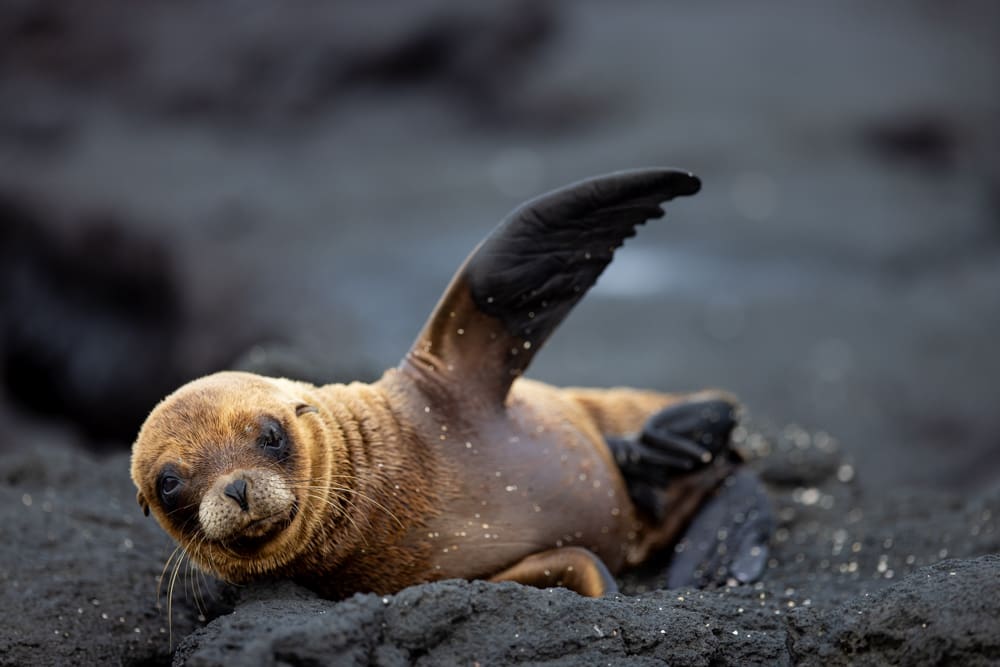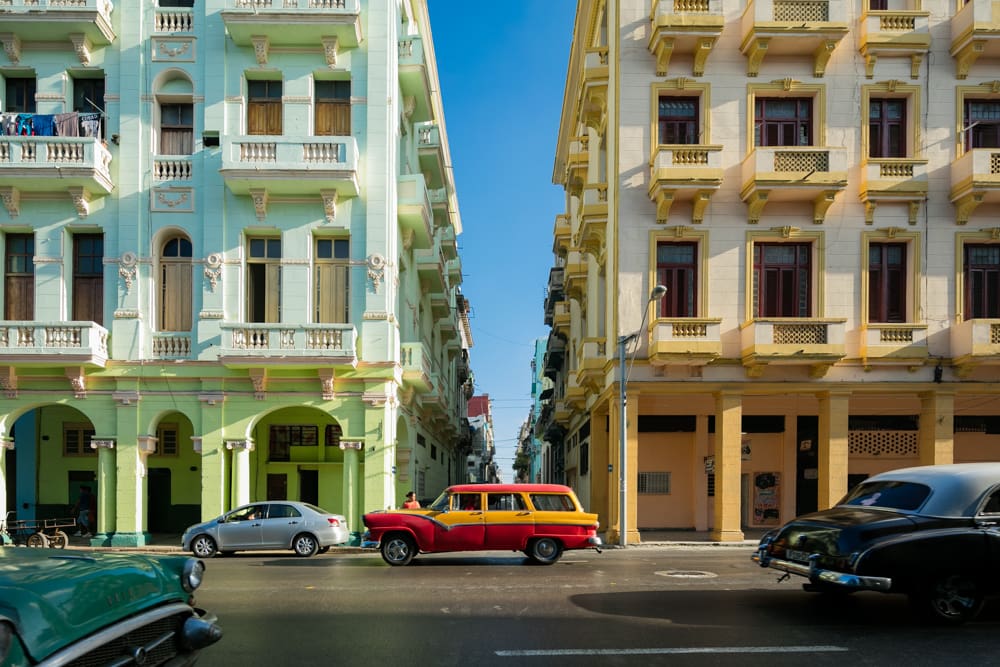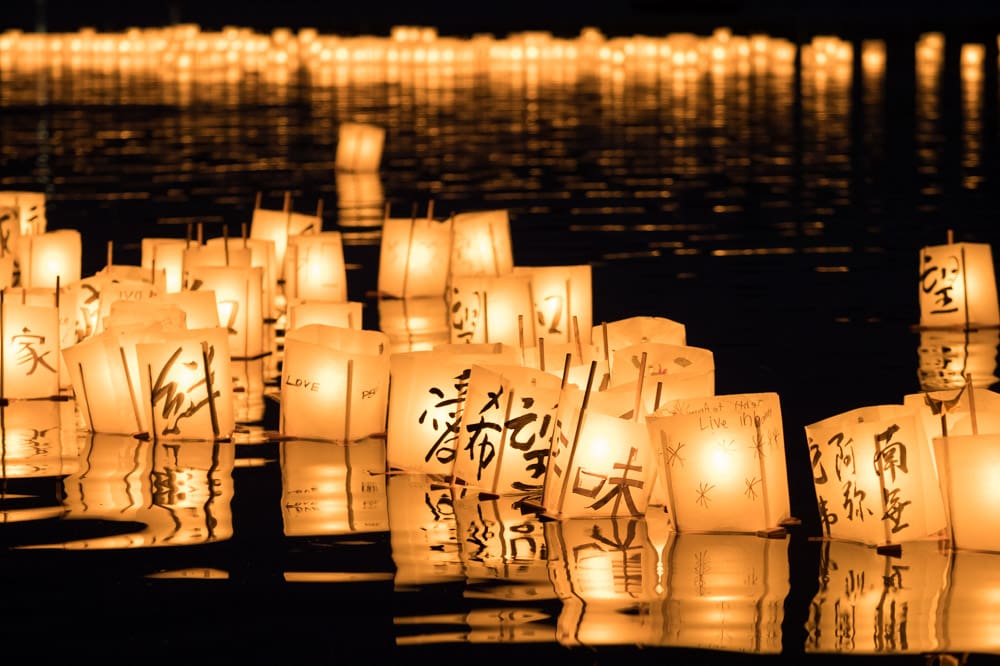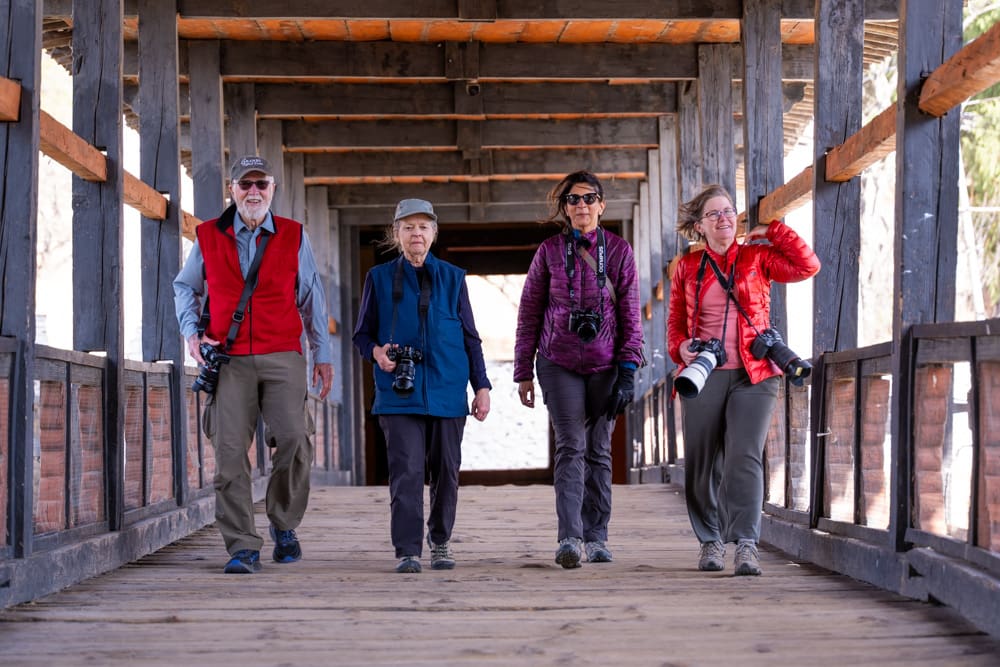We are about to enter a very special time of year – the migration. Tourists and photographers from around the world will be migrating to the plains of East Africa to witness the greatest wildlife show on earth. I am personally about to gather my camera gear and pack my bags for our upcoming Kenya Photo Safari that I will be leading in Kenya.

John Greengo in Kenya 2006
Photo Credit: Sean White
For everyone who is planning a safari tour, being properly prepared and having the right gear is paramount. When traveling this far from home, or for being so far afield, there is a very small margin for error. If you forget something important, it’s highly unlikely that you’ll be able to pick up a replacement once you leave the big city.
For the average tourist the pre-tour checklist will include everything from having the right visa documents (yellow fever card) to the right sun-protective clothing. For the photographer the checklist is substantially longer. A well-prepared camera bag can include a large number of very particular and sensitive items.
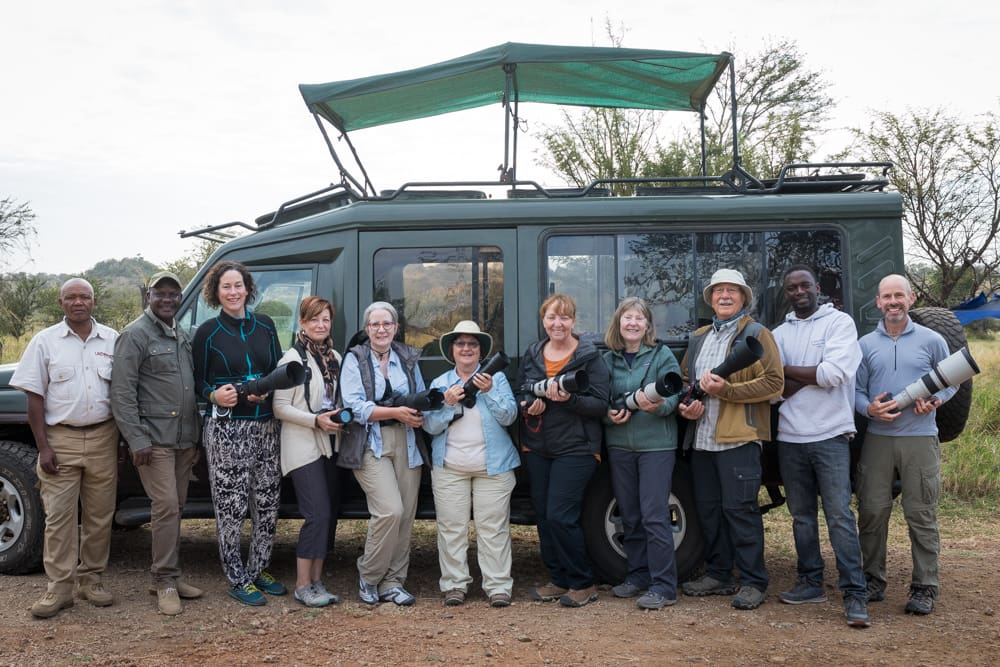
Kenya/Tanzania safari Photo Tour Group 2018
For clients on our tours we supply them with ample documents to inform them what they can expect on the tour, what to bring, and how to prepare. These documents and the items in them vary depending on the location of the tour. I’d like to highlight some of the more important items on that list for a safari tour.
Baggage
Taking small planes in Africa is very different than air travel between major airports in the rest of the world. The small planes that transport you directly to the parks and wildlife centers can have significant luggage restrictions. A typical baggage limit would be one “check” bag of 33lbs (15kg) plus one personal bag. This may be slightly challenging for the typical traveler, but for the photographer — with long glass necessary for distant animals — it can pose a number of dilemmas.

Small planes have tight restrictions on luggage size and weight
The “personal” bag is essentially your camera bag where you’ll need to have everything photographically that you will need for the trip. Weight and/or size restrictions may apply to this bag, but that will vary from airline to airline. Whatever you want to bring to support your photography will need to fit into this one bag. Your check bag may undergo some rough handling so you’d be wise to not put much else in it beyond your clothes.
Photo gear
The key piece of gear for getting great wildlife photos will be the telephoto lens. Which lens is best? Well that’s a long discussion well beyond the scope of this article. Suffice to say you’ll want a lens that reaches out to the full-frame equivalent of 400mm or more. A simple option would be a 100-400mm. A fixed lens of 300mm to 600mm may also work quite well, and if you add in some teleconverters your kit will be quite versatile. A longer zoom like a 150-600mm or 200-800mm would also be a convenient and versatile choice.

Pop top roofs on safari SUV’s provide a shady position to shoot from
No matter what long lens you bring, you’ll likely not have a great backup for it because it’s just not realistic bringing another option for cost, size, and weight reasons. Carefully transporting and using your long lens will be a high priority.
I always bring a backup camera when traveling internationally. The second body may come in handy when I want to shoot quickly with two different lenses, or it will serve as a backup should my primary camera experience a problem. A second camera with a different, smaller-sized sensor may be beneficial as it can give you a little extra reach with your lenses.

Canon 7D mark II, EF 300mm F/2.8 L IS II USM + EF 1.4x TC III @ 420MM | F/4 | 1/800 SEC | ISO 400
There’s not a huge need for a normal or wide lens for wildlife, but it would be wise to have a more basic lens to cover all the non-wildlife photographs. A simple 24-70mm or any other general zoom will do for most people. An ultra-wide lens is mostly unnecessary due to the environment, subject, and restrictions on where you can shoot.
Accessories
Lots of photographic accessories will be necessary: batteries, chargers, memory cards, storage devices, cleaning cloths, filters, cleaning supplies, and more. You may have noticed that tripods were not on that list. Tripods are largely unnecessary for most safari experiences. They are impractical while inside a vehicle, and you are not allowed outside the vehicle while there are animals in the area. A recent incident clearly shows why these rules are in place; a person on tour in South Africa was recently killed after exiting the vehicle to get a bit closer to the animals. Follow the rules and you shouldn’t have any problems.
Astrophotography may seem like a good activity for the night time being so far from any major city and light source. Typical game camps have boundaries to protect you from the wildlife and within that boundary they keep the camp well lit, both of which make shooting the night sky difficult to impossible.
Bringing a computer for downloading and reviewing may be quite handy, but is very optional these days. If you want to travel light and have the memory cards to handle your expected shooting, feel free to leave the computer at home and save several pounds. If you do bring it, you’ll be able to download and backup your daily shots as well as review more clearly what you are capturing. It can also be handy if you want to create a slide show to share images from your travels.
Clothing and personal gear
The severe weight restriction may seem highly limiting, but it can be overcome by sensible choices. The first thing to be aware of is you’re on safari and everyone knows it, so you don’t need to pretend it’s a fashion show. You do not need a new outfit for everyday you are there.
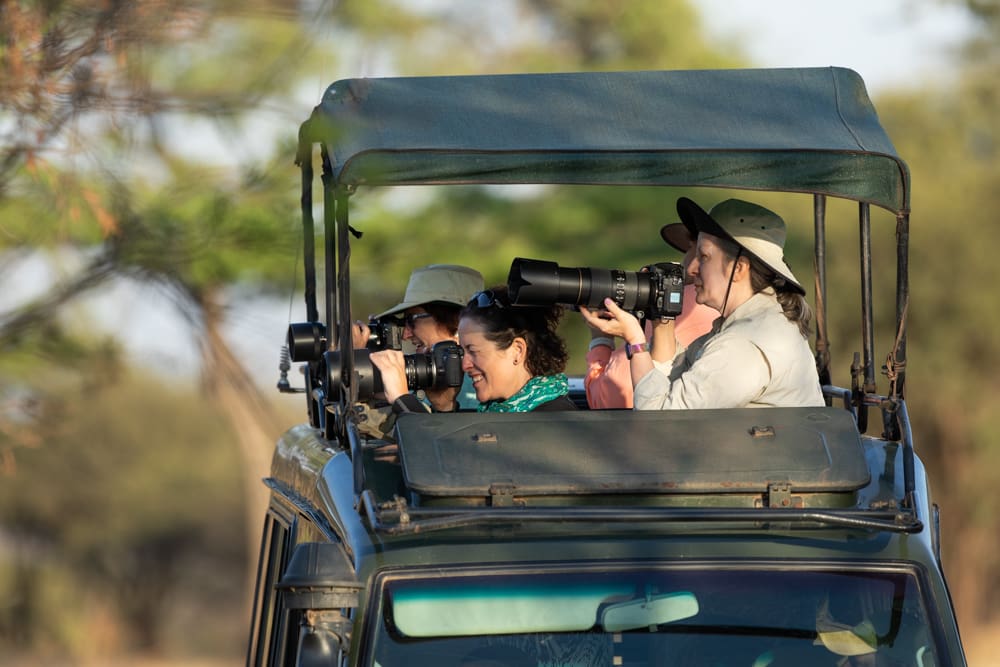
The cozy vehicles provide more than enough room for several photographers to get a good point of view on the action
Yes, you’ll want to bring more than 1 pair of pants, but not many more. It can be a bit of a challenge as you will be spending quite a bit of time outdoors where there can be a lot of dirt and dust. You are going to get dirty and you’ll know it when you shower and watch that river of brown water flow down the drain.
Some places will have laundry options, which is convenient, but it’s also quite easy to bring a small container of laundry detergent for washing key items yourself. I frequently wash a few items in the evening, let them dry overnight or the next day. This way I can rotate through 2 or 3 items of clothing throughout the whole trip.
It will be warm and it will be sunny, so bringing proper sun protection is vital. Long pants, long-sleeved shirts, sun hat, sunglasses, and sun screen should all be on your packing list. Fortunately you may not be out in the sun for all that long. The newer better quality safari vehicles will have a pop-top roof that will continue to block the sun and allow you to photograph out the top.
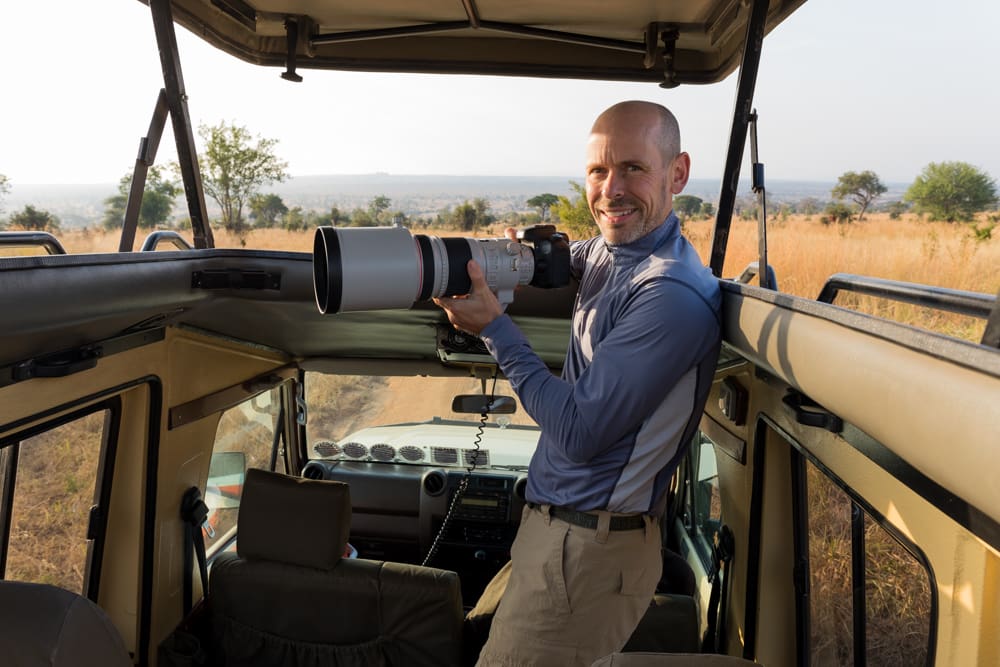
John Greengo in Kenya 2017
Photo Credit: Chris McLoughlin
Safari clothing has a particular look to it that may or may not fit with your personal style or your home environment. It looks the way it does because it functions well in the field. After a cool morning for your early game drive and with the sun now barring down and the heat rising, those zip-off cargo pants will be looking like the ultimate clothing choice.
Is it a physically demanding tour?
The African safari is both very easy and very demanding on the body. On one hand all you need to do is get in the vehicle, sit down and look around — that doesn’t seem all that hard now, does it?
On the other hand, you’ll be rising early and riding in a rough vehicle on rough roads for several hours a day. It can get very hot for most of the day, the dust can be bothersome and it may be a very long time before you see the next bathroom. There is a certain toll that the body takes with this type of outdoor exposure, no matter how refreshing the camps, dinners, and your bed will be at night.
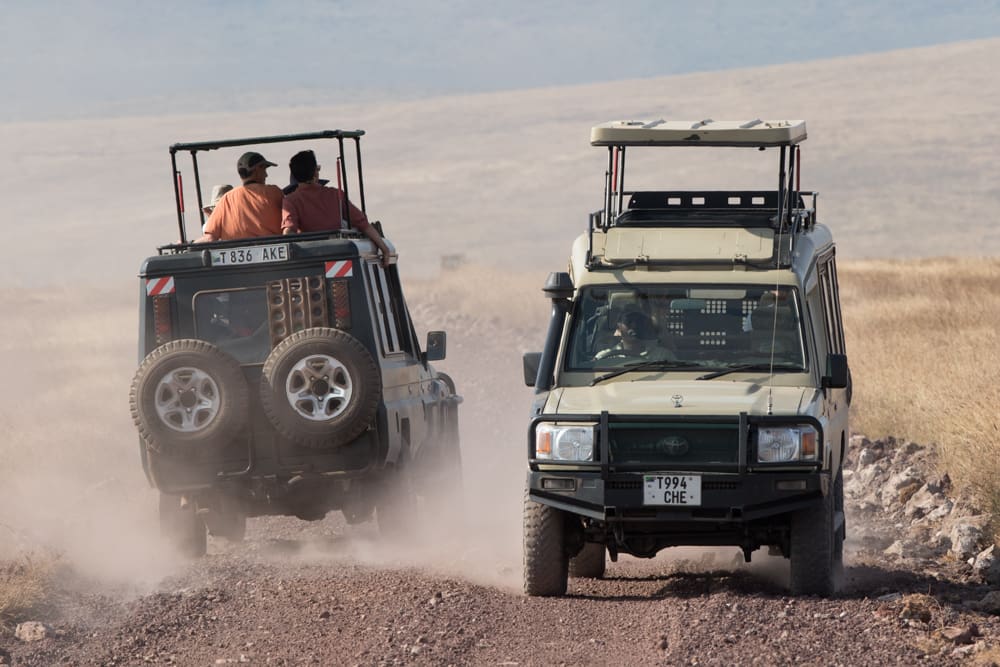
It can be long, hot, dusty days on a rough road between photo opportunities
There is an intensity to the adventure of the day while on Safari; and to be honest, that’s what we pay good money to experience. But day after day of this intensity can be a bit much for some people. Taking a morning or day off might be necessary to help “reset” your system and put you back on track. When feeling less than 100%, it’s better to miss a session, than a full day. And it’s better to miss a full day, than the rest of the tour.
To take advantage of every moment in the field you need to look after yourself and make wise physical and mental choices. All those bits of nagging advice from health experts come in handy here: drink lots of water, get your rest and eat well. Maybe you need to stretch or do a little yoga to begin or end the day. It might be better for your body and mind to use that camp pool rather than scrolling through social media posts.

Canon 5D mark IV, EF 300mm F/2.8 L IS II USM @ 300MM | F/5.6 | 1/200 SEC | ISO 100
How hard a trip it will be really depends on who you are and how you cope in different situations. While there is not significant walking during the trip, it’s a great way to prepare. Increased health and an exposure to the outdoors will only help on a trip like this.
Enjoy the tour
The safari tour is sure to be a highlight of any traveler’s memories, being prepared will help make the most of it. I’ve counseled many photographers that were torn between two options: should I choose this camera for more reach, or this one for more resolution; what about this lens that is faster or this other one that’s a bit longer. Sometimes those choices are so hard to make because you can’t fully appreciate what your choice will mean once it’s too late to change it.

Canon 5D mark IV, EF 300mm F/2.8 L IS II USM @ 300MM | F/2.8 | 1/800 SEC | ISO 200
Chances are that with a little research, or a little help (like from our travel guides) you’ll be able to figure out most stuff. For some of the more fine-tuned decisions you’ll likely find that each choice has it’s own pros and cons. With either option you’ll discover how to take advantage of the choice you’ve made while in the field. Work with what you’ve got and don’t worry about the rest. You’ll come back with a few great images, some mistakes, and a few missed opportunities and that’s life on safari.
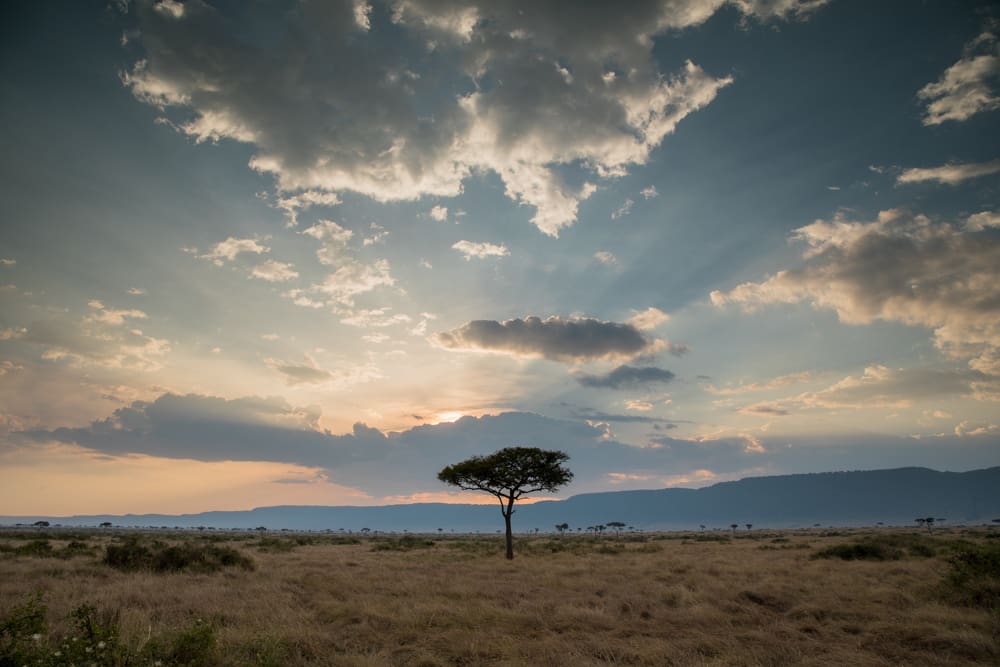
Canon 5D mark IV, EF 24-70mm F/4 L IS USM @ 24MM | F/11 | 1/40 SEC | ISO 100
Become part of John’s inner circle
Sign up for the newsletter here — it’s free.
Want to become a better photographer?
Check out John’s selection of photography and camera classes here.
